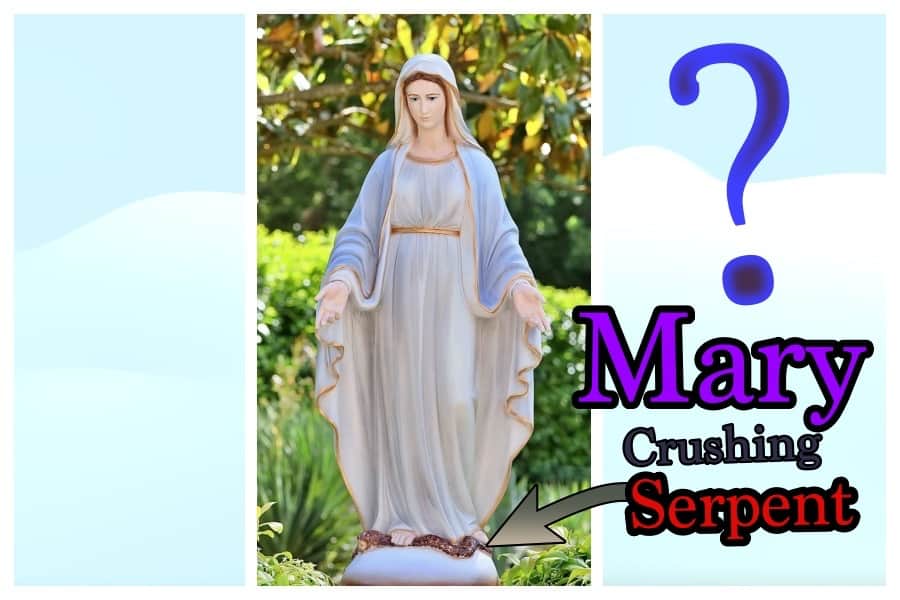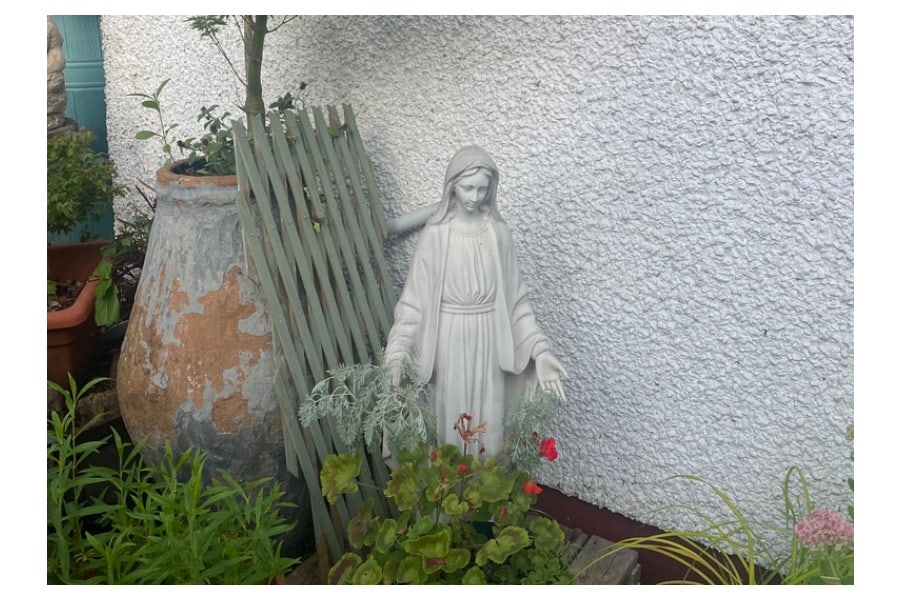
An 86-year-old woman discovered a beautiful statue of the Blessed Virgin Mary at a nearby garden centre. The immaculate white figure, standing at two-and-a-half feet tall, captivated her immediately. Excitedly, she called her friend to share her admiration for the statue on display. Her friend, equally enthralled, urged her to purchase it before someone else did.
Determined, the woman drove back to the garden centre and made the purchase, with the condition that the salespeople would load it into her car. After the deal was finalized, she realized this statue was the only one in the shop’s inventory.
For the next two weeks, the woman had to drive around with the statue in her car’s boot, searching for someone to help her unload and place it in her garden. Despite the inconvenience, she remained eager to showcase the stunning white statue, which depicted the Blessed Virgin Mary triumphantly crushing a serpent.
The woman began asking her friends about the name of the Mary depicted in the statue – with hands outward stretched and a serpent under her feet. However, none of their answers satisfied her curious mind. Determined to find a solution, she decided to consult a visiting priest.
During their conversation, the priest delved into the symbolism of the serpent in the book of Genesis and Revelation. Although he couldn’t immediately provide the name of the statue, he acknowledged it as a thought-provoking question that he would look into further.
Unveiling the Symbolism of Mary Crushing the Serpent
In religious art, symbolism plays a significant role in conveying deeper meanings and messages. One such powerful image is that of the Blessed Virgin Mary triumphantly crushing a serpent. This iconic representation holds profound symbolism that resonates with believers and art enthusiasts alike. I look forward to your questions about this captivating image’s rich symbolism.
Symbolism of the Serpent
The serpent has long been associated with evil, temptation, and the fall of humanity. In the book of Genesis, the serpent tempts Eve in the Garden of Eden, leading to the original sin. Throughout history, the serpent has come to symbolize the forces of darkness, sin, and the devil himself.
1. The Triumph of Good over Evil
The depiction of the Blessed Virgin Mary crushing the serpent represents the triumph of good over evil. It serves as a powerful reminder of the victory of righteousness and the ultimate defeat of sin and temptation. The image encapsulates the belief that one can overcome life’s challenges and temptations through faith and devotion.
2. Mary, as the New Eve
In Catholic theology, Mary is often referred to as the New Eve. Just as Eve’s disobedience brought sin into the world, Mary’s obedience and acceptance of God’s will brought forth redemption through her son, Jesus Christ. By crushing the serpent, Mary symbolizes her role in the salvation of humanity, offering hope and protection against the forces of evil.
3. Protection and Intercession
The image of the Blessed Virgin Mary crushing the serpent also represents her role as a protector and intercessor. Many believers turn to Mary for guidance, strength, and assistance in their spiritual journey. This depiction serves as a visual reminder of her power to intercede on behalf of humanity, shielding us from harm and guiding us towards righteousness.
4. The Struggle Against Sin
The statue’s symbolism also highlights the ongoing struggle against sin and the importance of remaining steadfast in faith. It reminds us that, like Mary, we can overcome the temptations and challenges we face daily. The image encourages us to seek Mary’s intercession and emulate her virtues as we strive to live virtuous and holy lives.
Iconic image with Mary crushing a serpent

This iconic image serves as a visual reminder of the hope, strength, and guidance Mary offers believers. As we contemplate this symbolism, it may inspire us to seek Mary’s intercession and strive for righteousness. Several iconic images in religious art depict the Blessed Virgin Mary crushing the serpent. I have listed only five for consideration.
Referring to the statue in the introductory story, I suggest it is Our Lady of Grace. Our Lady of Grace is sometimes depicted with her arms outstretched, and beneath her feet lies a serpent. This image symbolizes her role as the dispenser of God’s grace and protection against the forces of darkness.
However, there are other representations which portray Mary crushing a serpent. For example, images of Our Lady of Guadalupe, Our Lady of Immaculate Conception, Our Lady of Rosary, Our Lady of Victory, etc.
These are just a few examples of the many artistic interpretations of Mary crushing the serpent. Each image carries its unique symbolism but conveys the same message of Mary’s triumph over evil and her role as a powerful intercessor for humanity.
I have to say that I grew up hearing a miraculous story of Our Lady crushing the serpent in our Chapel across my home – Our Lady of Candelaria – (Our Lady of Light) with a feast day on February 2. It is as real as it gets.
About the Author
Feroz Fernandes, a Catholic Missionary, identifies himself as an Uncommon Priest. Father Feroz loves adventure in the apostolate. Check out his debut book The Uncommon Priest: Incredible Stories You Never Read. And also, the YouTube Channel: Feroz Fernandes promotes a better understanding of scripture.
Leave a Reply